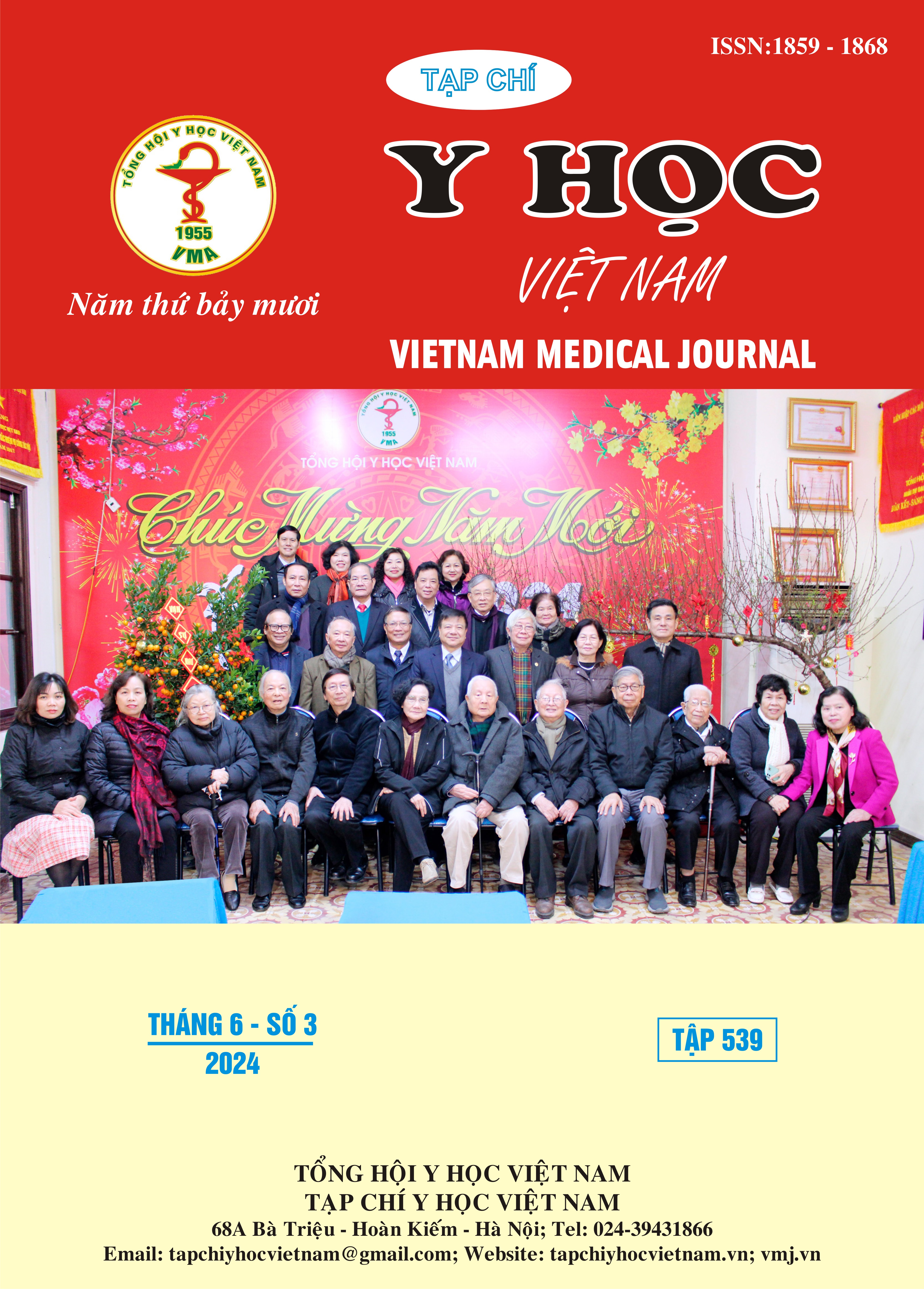EFFECT OF REPRODUCTIVE AND LIFESTYLE FACTORS ON ANTI-MULLERIAN HORMON LEVEL IN PRE-MENOPAUSAL WOMEN
Main Article Content
Abstract
Anti-mullerian Hormone (AMH) is a reliable marker of ovarian reserve and reproductive aging in premenopausal women. Objectives: Relationship between reproductive factors and lifestyle with AMH levels in premenopausal women. Subjects and methods: Cross-sectional study, performed on 140 women in premenopausal age. Information collection, clinical characteristics by interview questionnaire. AMH and sex hormone assays were performed on a Cobas E801 machine by electroluminescence immunoassay. Results: There was a difference in menstrual status, menstrual cycle characteristics and FSH, LH, E2 tests in 2 groups of normal AMH and low AMH with p<0,05. Low levels of AMH were associated with increasing age with odds ratio OR = 0,83 with 95%CI 0,69 – 0,98. There is a correlation between short menstrual cycle, long cycle/amenorrhea <12 months with low AMH concentration with OR (95%CI) of 6,15 (1,29 – 29,19); 7,1 (1,69 – 29,81). FSH, LH, and E2 levels were significantly lower in the group with lower AMH levels than in the normal AMH group. FSH, LH and E2 levels were significantly lower in the group with lower AMH levels than in the normal AMH group. Conclusions: Low AMH levels are associated with menstrual status, menstrual cycle characteristics and with some endocrine hormones in the perimenopausal.
Article Details
Keywords
Anti-mullerian Hormon, perimenopausal, sex hormones
References
2. E. B. Gold (2011). The timing of the age at which natural menopause occurs. Obstet Gynecol Clin North Am, 38 (3), 425-440.
3. S. D. Harlow, M. Gass, J. E. Hall và cộng sự (2012). Executive summary of the Stages of Reproductive Aging Workshop + 10: addressing the unfinished agenda of staging reproductive aging. J Clin Endocrinol Metab, 97 (4), 1159-1168.
4. S. L. Broer, M. J. Eijkemans, G. J. Scheffer và cộng sự (2011). Anti-mullerian hormone predicts menopause: a long-term follow-up study in normoovulatory women. J Clin Endocrinol Metab, 96 (8), 2532-2539.
5. S. Jung, N. Allen, A. A. Arslan và cộng sự (2017). Demographic, lifestyle, and other factors in relation to antimullerian hormone levels in mostly late premenopausal women. Fertil Steril, 107 (4), 1012-1022 e1012.
6. S. Sahmay, T. A. Usta, T. Erel và cộng sự (2014). Elevated LH levels draw a stronger distinction than AMH in premature ovarian insufficiency. Climacteric, 17 (2), 197-203
7. S. Sahmay, T. Usta, C. T. Erel và cộng sự (2012). Is there any correlation between amh and obesity in premenopausal women? Arch Gynecol Obstet, 286 (3), 661-665.
8. H. I. Su, M. D. Sammel, E. W. Freeman và cộng sự (2008). Body size affects measures of ovarian reserve in late reproductive age women. Menopause, 15 (5), 857-861.


